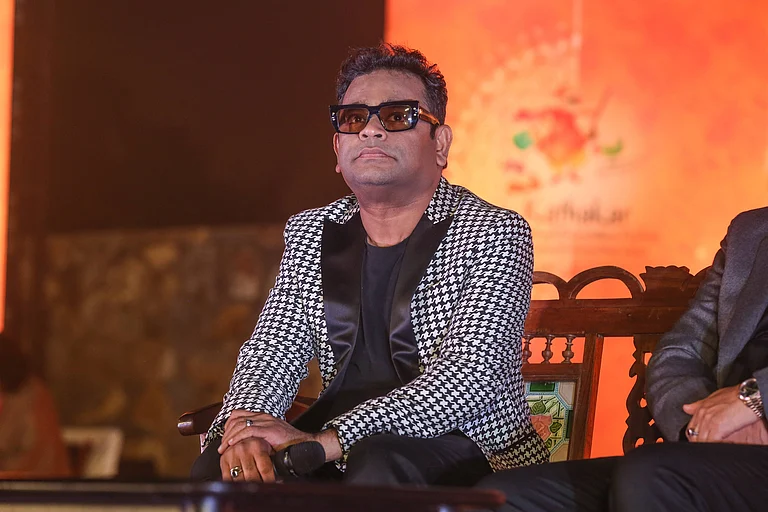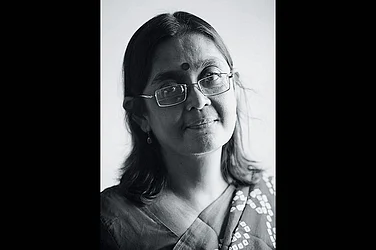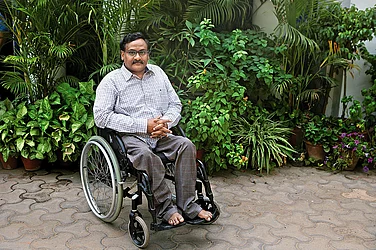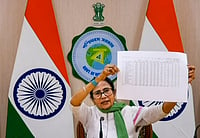Union Finance Minister Nirmala Sitharaman will present the Interim Budget or the vote on account on February 1st as the country goes into Lok Sabha polls in a few months. The vote on account enables the elected government to present a new budget for the upcoming fiscal year, in June or July. Sitharaman in a record sixth time presenting the budget, has already announced that no "spectacular announcements" are to be expected on February 1. Last year, the education budget reached an all-time high share after having hit the trillion mark in 2022. Of all the sectors, education under the government has been subject to consistent debate and deliberation with continuous scrutiny from stakeholders and the opposition critics.
Education budget over the years since 2014
The education budget under the BJP administration has seen an increment from Rs 68, 728 crores in 2014 to 1.13 trillion in 2023. In line with the National Education Policy 2020, the 2021 budget affirmed the allotment of 6 per cent of GDP to education. Numerous schemes including Rashtriya Uchchatar Shiksha Abhiyan, Nai Manzil, education loan schemes like Pradhan Mantri Vidya Lakshmi Karyakram, development of initiatives like STRIVE, SANKALP, HEFA and SWAYAM, establishment of the National Testing Agency in 2017, Ekalavya Schools among others have defined BJP government's educational expenditure. However, despite having crossed the trillion mark and having the highest ever allocation for education last year, according to The Economic Survey 2022-23 while "student enrolment has been higher, school-level infrastructure is better and there are more teachers to boot, the total expenditure (combined states and Centre) on education as a percentage of GDP had stayed stagnant at 2.9% since 2019, and is only marginally up from 2.8% in FY16."
Increased privatisation
Over the last few years and through the pandemic, there has been a recorded rapid increase in private entities in the educational sphere. The Unified District Information on School Education (UDISE+) 2021-22 when compared to 2018-2019 showcased a decline in the number of government and aided schools and a simultaneous rise in the prevalence of private schools, with the pandemic still at large. When it comes to higher education, according to reports, almost 78.6% are privately managed colleges, out of which 65.2% are unaided.
According to analysts, the NEP has aided the aggressive privatisation of education, helping non-governmental entities to maximize profits, along with inflow of Foreign Direct Investment (FDI) into educational sectors and the establishment of campuses of foreign universities in India through strategic partnerships. The establishment of the Higher Education Financing Agency (HEFA), a collaboration between Canara Bank and the Ministry of Human Resource Development which was meant to financially assist Indian universities for betterment of educational infrastructure and research, in reality replaces existing government grants for infrastructural projects in higher education institutions. The NEP also aims to ramp up online education in a country where only 52% of the population had access to the internet in 2022 and only 11% had access to a computer in 2019. The curtailing and discontinuation of government scholarships like Maulana Azad National Fellowship, on the pretext of it overlapping with other scholarships, for students belonging to lesser privileged communities and the boom of educational privatisation have inevitably led to the exclusion of marginalised communities, Dalits, and Adivasis.
Policing and lack of funding
Triggering immense controversy and criticism, governmental involvement through BJP’s “Hindutavisation project” has been another prong under criticism alongside the lack of promised and properly channeled governmental funds over the years. Critics have pointed out how the BJP’s saffronisation has been sponsored and exercised with bodies like UGC, NTA, NAAC and NCERT. The influence exerted through the exclusion of parts of history like sections on attempts by Hindu extremists to assassinate Mahatma Gandhi, the ban imposed on Rashtriya Swayamsevak Sangh (RSS) and numerous parts from Mughal history from NCERT school textbooks has not been garbed. Experts and analysts have thus criticised the approach of the government towards educational projects in its ground reality, despite having consistently shown an increase in the allocated budget over the years. Numerous teachers at schools and universities across India have voiced against the lack of funding, misallocation of promised funds, low salaries, and the digital divide that keep permeating educational structures since the pandemic.
“Individual States like Bengal could still find means of meeting the huge budgetary apathy for education by successive union governments and excel especially in the field of higher education. But in the past 7-8 years the added challenges of indiscriminate withholding of central funds and BJP's attempted saffronization of education especially through the Governors/Chancellors have made it worse especially for the non-BJP ruled States like ours in maintaining the same standard. Nevertheless, higher education in Bengal tops the chart in the country in terms of ranking both nationally and internationally,” said Manojit Mandal, Professors and Chair, Department of English, Jadavpur University.
Kunal Chattopadhyay, professor of Comparative Literature at Jadavpur University, also expressed how the the government's concerns in education have primarily dealt with policing more than funding. “Since China is a neighbour that has improved its global economic and educational standing, a comparison with China is worthwhile. UNESCO Institute for Statistics puts the gross Gross Tertiary Enrolment Rate (GTER) of China at 48.44 % to India’s 26.93% for the year 2016, while China’s tally in the world’s top-500 universities has gone up from 16 in 2012 to 26 in 2022. In the case of India it was seven in 2012 and eight in 2022." He also goes on to establish how defunding plays a major role here. “An end of the plan period based UGC funding for colleges and universities, the Special Assistance Programmes (DRS, DSA, CAS) at the department level, discontinuation of the Maulana Azad National Fellowships, thereby specifically targeting minority students, as well as a general whittling down of JRFs and turning the NET into an absurdity, the simultaneous ending of pre-matric scholarship for the minority students up to class 8 and the general assault on humanities education and research as well as much serious science teaching and research are just a few instances. A particular mention should be made about the assault on History, with ICHR money going to bolster fake and obscurantist Hindutva myths.”
In a country, where numerous headlines keep popping up on how PhD and M.Tech students have had to take up jobs that are objectively distanced from their mettle, the rising number of suicides owing to lack of employment opportunities in the educational sector, and surging drop-out rates owing to factors like increasing costs and a widening digital gap, the numbers on paper and promised schemes hold no relevance unless the government ensures ground implementation across institutions with properly channelled funds.



























